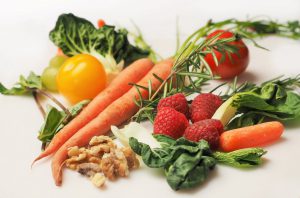In collaboration with Liver4Life
Managing a liver condition on a day-to-day basis can be challenging. To handle a condition well often requires resilience, a stable and supportive environment as well as a level of understanding of the condition itself. The symptoms of each liver condition can vary and often depends on the severity of the damage to the liver. Symptoms can also fluctuate over the course of a week, and while you might feel extremely unwell on one day, you might feel better on the next.

®Phovoir
Look after yourself
First and foremost, you need to look after yourself. This might mean spending a day on the sofa declining social engagements, or it might mean asking for help from family and friends. Managing your diet, fatigue, as well as other associated symptoms means that you might have to be self-seeking at times and do what is best for you and your body. Learning to understand your body’s limits as well as adapting to your symptoms is crucial in the day-to-day management of your liver condition.
Eat well

Balancing the right foods and nutrients are important when managing a liver condition. It is likely that you have been given advice from your medical professional on what you should, and shouldn’t, be eating and drinking. If you haven’t, don’t be afraid to ask to be referred to a dietician.
Eating a good, balanced diet is one of the most important things you can do to keep yourself well. Ensuring enough protein is an important part of managing a liver condition as amino acids and ammonia come from protein in the diet1. Meals eaten regularly throughout the day containing protein (such as meat, fish or beans), starch (such as bread, potatoes or rice) and vitamins (in fruit and vegetables) are the best approach. A recent study suggests that patients with cirrhosis do better when they get their protein from vegetables (such as beans, lentils) and from dairy products (eggs, milk, yogurt) instead of from meats.1
Many people with advanced liver disease find that they have a small appetite or cannot manage normal sized meals. However the body may need extra calories and protein. Cirrhosis can hinder the body’s use of nutrients and can lead to malnutrition.3 As well as a decline in appetite, people might experience nausea, vomiting, and severe weight loss1. This can lead to shortage of the minerals calcium and magnesium shown through muscle cramps, fatigue, weakness, nausea, and vomiting. A shortage of zinc can also result in a reduced ability to taste or changes to the taste of food.
Some people with advanced liver disease are advised to follow a low-salt (sodium) diet. Sodium encourages the body to retain water, which is not advised1. Managing salt intake can have an impact on liver conditions and can help to prevent liver failure and preventing serious complications.
Some tips for managing salt consumption:
- Avoid salty foods, salt in cooking, and salt at the table. Anything that tastes salty (such as tomato sauce, salsa, soy sauce, canned soups) probably has too much salt. Spice things up with lemon juice or herbs, instead of salt. Fresh foods usually are a better bet than processed foods. Microwave or steam vegetables to retain flavour.
- Read food labels when shopping. Check the amount of sodium in the foods you are buying.
- Avoid fast-food restaurants. Most fast foods are very high in sodium.
- Go easy on meats, especially red meats, which are high in sodium. When possible, consider vegetarian (meat-free) alternatives.
- Many foods contain ‘hidden’ salt, such as bread, biscuits, sauces and cereals.
- Avoid using salt in cooking – microwave or steam vegetables to retain flavour.
- It is also helpful to get the advice of a dietician who can offer tips and meal plans tailored around your food preferences.
Stay hydrated

Keeping your water levels topped up remains as important as it is for people without a liver condition. Try to drink 1.5-2 litres of water per day. Again, consult your dietician to make sure that this amount of water is advised as some conditions may require a specific approach. For example, when swelling is present, fluid intake must be restricted so that a potassium-rich diet must often fall through.2 Potassium-rich foods also contain a lot of water.2
Learning to deal with extreme fatigue
Feeling extreme tiredness with liver disease is a common symptom. Many people with advanced liver disease feel very tired and have low energy levels. This can be due to your medical condition, external stresses or a combination of the two. Fatigue affects people differently and can come and go. One day you may feel able to live normally and the next you may have difficulty getting the energy and strength to do even the smallest tasks.
Planning your day and the week ahead is very important if you experience fatigue.
- Plan in time to rest during the day.
- Think about which things are the highest priorities for you and your family, and make sure these get done first.
- Be realistic about what you can do and don’t try to do too much.
- Ask for help, not just from your family, but think about which tasks a friend or neighbour might be able to do for you.
- Explain to people that you need to be flexible, so that you can leave early from a party or social engagement.
Some people experience sleep problems. This can mean that you need to sleep during the day, or perhaps that you have difficulty sleeping through the night. Plan your day to suit your body’s needs, taking naps during the day if you need to.
Protecting yourself from infection
People with liver disease are more vulnerable to infections, and if they do get an illness, are more likely to become severely ill5:
- Avoid close contact with adults and children carrying infections.5
- Avoid inhaling dust particles or smoke.5
- Keep good standards of hygiene.5
- Brush your teeth after every meal and floss daily. Try and visit the dentist every six months.5
- Thoroughly clean all cuts and grazes before applying a clean, dry dressing or plaster, and keep an eye on them to make sure they are healing.5
As with medications, it is important to make the doctor or nurse aware of your liver condition and tell them if there have been any changes in your condition, before having any treatment.5
Hepatitis A and B
These infections are much more serious in people who already have another liver disease, so visit your GP for the full course and the booster when due.5
Use over-the-counter medications carefully
Cirrhosis makes it more difficult for your liver to process drugs. For this reason, ask your doctor before taking any medications, including non-prescription drugs. If you have liver damage, your doctor may recommend you avoid paracetamol (acetaminophen) or take it in low doses for pain relief.6
Seek support

Aside from talking with friends and family, it is sometimes useful to speak with people who are independent from your everyday life. There are some great organisations that offer support and advice on managing liver disease. In addition, there are a number of support groups both locally and via social media platforms, such as Facebook and Health Unlocked that can provide peer support from people also affected by a liver condition.
Associated contents :
Detoxification : some foods to cleanse your liver
Why is inactivity bad for your liver?
References:
- S. Department of Veteran Affairs. Eating tips for people with cirrhosis. DIET AND NUTRITION. https://www.hepatitis.va.gov/patient/daily/diet/tips-for-people-with-cirrhosis.asp [Accessed October 2017]
- Falk Foundation. A Guide for Patients with Liver Diseases including Guidelines for Nutrition. 13th edition 2015. http://www.drfalkpharma.com/uploads/tx_tocfpshoperw/F80e_13-1-15.pdf?PHPSESSID=41f2584395f3f70c2575794e2b6f1b22 [Accessed October 2017]
- Eghtesad S, Poustchi H, Malekzadeh R. Malnutrition in Liver Cirrhosis: The Influence of Protein and Sodium. Middle East J Dig Dis 2013;5:65-75.
- Angeline Bhalerao and Gurdeep S. Mannu, “Management of Pruritus in Chronic Liver Disease,” Dermatology Research and Practice, vol. 2015, Article ID 295891, 5 pages, 2015. doi:10.1155/2015/295891 https://www.hindawi.com/journals/drp/2015/295891/ [Accessed October 2017]
- British Liver Trust. Looking After Yourself. https://www.britishlivertrust.org.uk/liver-information/living-with-liver-disease/looking-after-yourself/ [Accessed October 2017]
- The Mayo Clinic. Cirrhosis. Diagnosis and Treatment. https://www.mayoclinic.org/diseases-conditions/cirrhosis/diagnosis-treatment/drc-20351492 [Accessed October 2017]

What can cause high ammonia levels
Dear Tina, thank you for your comment.
According to this article (https://www.webmd.com/a-to-z-guides/ammonia-test#1), kidney or liver failure may be some of the causes of high ammonia levels, because, due to these failures, our body cannot get rid of ammonia in urea.
But to learn more, and regarding your individual condition, you might ask your GP for more details. Maybe it has nothing to do with kidney or liver. And, as a patient, you have the right to obtain the information you need.
Do not hesitate to contact us again for more information.
Best regards,
My Liver Exam Team.
Is there any way to see if you have liver disease with out going typ the DR?
Hi my name is cassandra, i have a partner who has been told that he has liver problems and just wanted to see what i can do to help him out. He was also put on tablets to start off as he has another appointment in the next 2 weeks, anything to help me out would be great and thank you
Thanks for posting such an amazing article on what to do when you have liver disease. After reading this article, I got lots of ideas regarding the best method to take care of my liver. This article also helped me to choose the best liver treatment.
What about supplements
Thank you for this guide.
I was diagnosed with mild hepatic fibrosis with stiffness of 6.69kPa by SWE.
Will consult with my GP regarding the result.
Would like to inquire if what’s the stage for my fibrosis?
I want to join a gym is this a good idea, I will obviously rest when fatigued. I have alcohol related liver disease, up until last month I was told that I needed a transplant, now they are saying I currently do not need it.
I HAD IN CROCK POT LAST NIGHT. ROAST POTATOES CARROTS CREAM MUSHROOM GREEN PEPPER.
I GOT BURNING IN MY CHEST STOMACK TO MY BACK.. I TOOK ANTACIDS IT TOOK OVER 2 HOURS TO GO AWAY. IS THIS NORMAL FOR A LIVER PATIENT ?
I HAD IN CROCK POT LAST NIGHT. ROAST POTATOES CARROTS CREAM MUSHROOM GREEN PEPPER.
I GOT BURNING IN MY CHEST STOMACK TO MY BACK.. I TOOK ANTACIDS IT TOOK OVER 2 HOURS TO GO AWAY. IS THIS NORMAL FOR A LIVER PATIENT ?
yes, get blood test yourself. lifeextension . com lets you buy blood tests without a prescription. you have to either find a phlebotomist to draw your blood or buy a centrifuge on amazon / ebay for $50 and buy the alcohol pads, turnquet, and butterfly needles on amazon and do it yourself. life extension says you are not allowed to draw your own blood, but how would they know how you got the blood out of your body, just sign a fake name on the phlebotimist line on paperwork and follow the blood drawing instructions (ie some tests require centrifuge others don’t, some require refrigeration of blood etc..) and obviously don’t tell them. anyway they then mail /email the results to you . if there is anything out of range or very close to out of range for the cbc grouping of tests you know you have a liver problem. the paperwork puts in bold letters whats out of range so it’s easy to tell
Thank you for providing the information, it was professional, concise, and helpful
Am a 36 years old man I have just diagnosed of liver infection few months ago without knowing the full details. Am presently at home feeling mild pain from my stomach very weak and discouraged fearing for my life. I don’t know what to do.